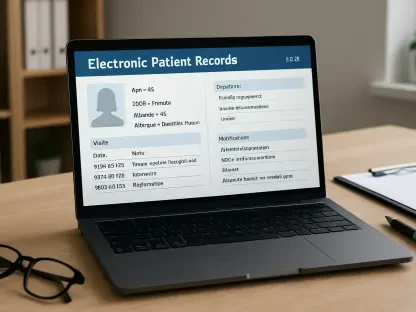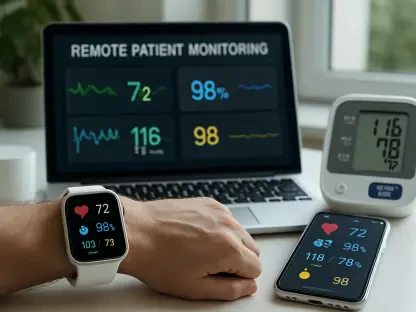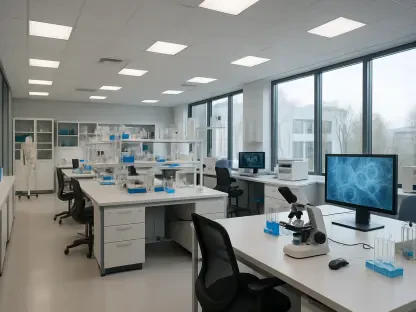In a remarkable stride toward merging health care with education, R. Homer Andrews Elementary School in Burlington, North Carolina, has emerged as a focal point for an innovative Cone Health initiative that introduces telehealth services directly into the school environment. Announced earlier this year, this program seeks to combat the ongoing challenge of student absenteeism by addressing minor medical issues without requiring children to step away from their classrooms. By employing cutting-edge digital tools and facilitating video consultations with health care providers, the initiative ensures that students receive prompt medical attention, allowing them to remain focused on their education while maintaining their health.
This forward-thinking approach forms part of a broader expansion to 12 schools across the region, with Andrews Elementary playing a pivotal role. Designed to manage common health concerns like sore throats or minor infections, the telehealth program aims to prevent these issues from becoming significant barriers to attendance. Through the integration of technology, Cone Health is forging a vital link between medical care and academic continuity, placing equal importance on student well-being and scholastic achievement. This effort not only keeps children in school but also tackles practical obstacles faced by many families, such as limited access to nearby medical facilities or the inability to take time off work for doctor visits, thereby supporting the broader community in underserved areas like parts of Burlington.
The Promise of Telehealth in Schools
Addressing Absenteeism and Health Outcomes
The introduction of telehealth at Andrews Elementary offers a direct solution to the pervasive issue of absenteeism by providing immediate care for minor health problems that often disrupt a student’s school day. With the ability to connect with Cone Health providers through video consultations, students can be assessed and treated for ailments such as colds or small injuries right at school. This rapid intervention minimizes the time away from learning, ensuring that a simple health concern doesn’t turn into a missed day or week of education. The program’s focus on quick response times aligns with broader educational goals, as consistent attendance is widely recognized as a cornerstone of academic success, particularly for young learners who thrive on routine and engagement in the classroom.
Beyond just keeping students present, the telehealth initiative emphasizes a preventative approach to health care, aiming to stop minor issues from escalating into more serious conditions that could lead to prolonged absences. By catching symptoms early through remote assessments, health providers can offer timely advice or treatment, reducing the risk of complications. This proactive strategy not only benefits individual students but also contributes to a healthier school environment overall, as it limits the spread of contagious illnesses. For Andrews Elementary, this means fostering a setting where well-being is prioritized alongside academics, potentially setting a standard for how schools can integrate health services to support long-term student outcomes.
Building a Foundation for Well-Being
Another critical aspect of the telehealth program lies in its capacity to create a safety net for students who might otherwise fall through the cracks due to untreated health issues. The availability of medical consultations during school hours ensures that children receive attention that might be delayed or inaccessible outside of school due to family circumstances. This consistent access to care helps build a foundation of trust between students, families, and health providers, reinforcing the idea that health is a priority within the educational space. At Andrews Elementary, this could translate into improved student confidence and engagement, as physical discomfort is addressed promptly.
Additionally, the program’s design considers the holistic needs of students by integrating health care into their daily environment, making medical support as routine as a math lesson. This normalization of care can reduce the stigma some children might feel about seeking help for health concerns, encouraging them to speak up when they’re unwell. For the school community, this shift could lead to a cultural change where health and education are seen as inseparable components of a child’s development. The impact at Andrews Elementary might inspire similar integrations elsewhere, highlighting the potential for telehealth to redefine student support systems.
Breaking Down Barriers to Access
Supporting Families and Communities
One of the most significant advantages of the telehealth program at Andrews Elementary is the unparalleled convenience it offers to families, particularly those constrained by work schedules or geographic isolation. For many parents in Burlington, taking a child to a doctor often means sacrificing work hours or navigating long distances to medical facilities, challenges that can be insurmountable for some. By bringing health care directly into the school, Cone Health eliminates these hurdles, allowing students to receive treatment without disrupting family routines. This support is invaluable for working parents who might otherwise struggle to balance employment demands with their child’s health needs, ensuring that medical care is no longer a source of stress or sacrifice.
Equally important is the program’s role in promoting equity in health care access, especially for underserved populations within the Burlington area. Families lacking reliable transportation or nearby clinics often face disparities in receiving timely medical attention, which can exacerbate health issues and impact school attendance. The telehealth initiative counters this by providing a direct line to care, leveling the playing field for all students regardless of their socioeconomic background. At Andrews Elementary, this means every child has the opportunity to stay healthy and engaged in learning, fostering a more inclusive environment where external barriers don’t dictate educational outcomes. This approach could serve as a blueprint for addressing systemic inequities in other communities facing similar challenges.
Enhancing Community Resilience
The telehealth program also strengthens community resilience by reducing the broader impact of health-related disruptions on families and local systems. When students can be treated at school for minor ailments, it lessens the burden on parents to seek emergency or after-hours care, which can be costly and time-intensive. This efficiency not only supports individual households but also eases strain on local health care facilities, allowing them to focus on more critical cases. For Andrews Elementary, being part of this initiative positions the school as a hub of support, enhancing the community’s ability to weather health challenges collectively without sacrificing education.
Furthermore, the program fosters a sense of partnership between schools, health providers, and families, creating a network of care that extends beyond the classroom. This collaborative spirit ensures that health solutions are tailored to the specific needs of the Burlington community, addressing local challenges with targeted interventions. The success of telehealth at Andrews Elementary could encourage other districts to adopt similar models, amplifying the impact on community health and resilience. By embedding medical access into the school day, the initiative redefines how communities can support their youngest members, ensuring a healthier, more connected future.
Technology as a Tool for Innovation
Practical Applications in a School Setting
At the heart of the telehealth program at Andrews Elementary is the seamless integration of technology, which enables real-time medical consultations through practical, user-friendly tools. On-site certified medical assistants utilize iPads for video visits, connecting students with remote nurse practitioners who can assess conditions like sore throats or respiratory issues. Specialized diagnostic equipment allows these providers to examine a child remotely, such as listening to heartbeats or checking for infections, ensuring accurate evaluations without the need for a physical doctor’s presence. This innovative setup transforms the school into a mini-clinic, blending health care with education in a way that prioritizes student convenience and safety while maintaining high standards of medical attention.
The practical application of these digital tools also highlights their adaptability to a non-traditional setting like a school, where space and resources might be limited. The technology is designed to be intuitive, ensuring that staff can operate it effectively with minimal disruption to the school day. For Andrews Elementary, this means that health interventions are swift and discreet, allowing students to return to their lessons with little interruption. The success of this model demonstrates how technology can be tailored to meet specific community needs, offering a glimpse into how digital solutions can enhance service delivery in diverse environments beyond just health care, potentially influencing other educational support systems.
Scalability and Future Potential
Looking ahead, the telehealth initiative at Andrews Elementary underscores the scalability of digital health solutions, suggesting a future where such programs could become commonplace in schools nationwide. The expansion to 12 schools in the region indicates that Cone Health has developed a replicable framework, one that can be adjusted to fit varying school sizes and demographics. If successful, this model could inspire state or national policies to integrate telehealth into educational settings, addressing widespread issues like absenteeism and health disparities on a larger scale. The potential for growth positions Andrews Elementary as a pioneer, showcasing how localized efforts can inform broader systemic change in public health and education.
Moreover, the future potential of telehealth in schools lies in its capacity to evolve with technological advancements, ensuring long-term relevance. As digital tools become more sophisticated, the scope of care provided could expand beyond minor ailments to include mental health support or chronic condition management. For Andrews Elementary, being at the forefront of this shift means contributing to a legacy of innovation that prioritizes student well-being. The lessons learned from this program could guide other districts in adopting similar technologies, ultimately transforming how schools function as centers of both learning and care, setting a new standard for holistic student support.









